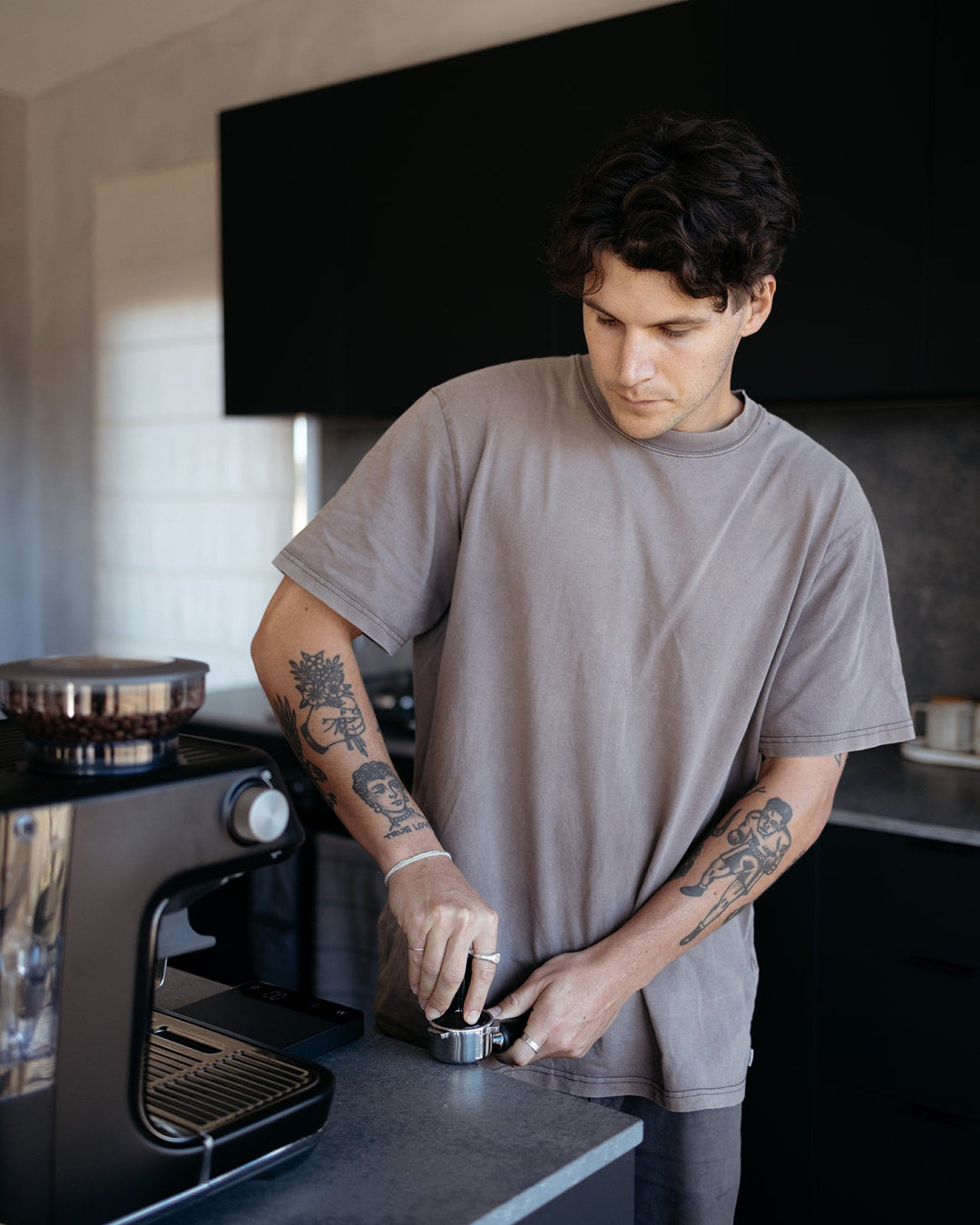What to Know Before Buying SOE Single Origin Espresso
Wiki Article
Comprehending Coffee Beans: the Journey From Coffee to Blended Coffee Beans

The Beginnings of Coffee: A Global Point Of View
While you may consider coffee as a modern staple, its origins trace back centuries, linking with cultures throughout the globe. The story starts in Ethiopia, where tale says a goat herdsman named Kaldi found the energizing impacts of coffee beans after seeing his goats frolicking vigorously after consuming them. This triggered passion, bring about coffee's spread to Arab traders who cherished the made beverage. By the 15th century, it reached Persia, Egypt, and Turkey, where coffeehouses came to be social centers for conversation and culture.As trade courses broadened, coffee made its way to Europe in the 17th century, promptly getting popularity. It changed from a magical beverage into an everyday ritual, inspiring gatherings and intellectual exchanges. Each society added its special twist to coffee prep work, improving its history. This worldwide journey highlights just how coffee attaches us, transcending borders and uniting varied practices through a simple bean.
Farming and Harvesting of Espresso Beans
As coffee's trip progressed, the emphasis moved to the farming and harvesting of details bean selections, specifically those used for espresso. You'll locate that coffee beans commonly originate from Arabica or Robusta plants, each offering distinctive tastes. The perfect expanding conditions include high altitudes and abundant, well-drained soil, which enhance the beans' quality.During the harvest, picking methods vary. Timing is important; you want to harvest when the cherries get to peak perfection for maximum flavor.
Once collected, the beans are prepared for handling, which is necessary in identifying their final taste. Understanding the farming and gathering procedures provides you insight into what enters into your preferred coffee, enhancing your admiration for each cup.
Handling Methods: From Cherry to Bean
Currently that you've learnt more about gathering espresso beans, let's discover how those cherries transform into the coffee beans you enjoy. You'll see exactly how various harvesting strategies effect taste, followed by the vital actions of fermentation and drying out. We'll damage down the milling and grading procedure that establishes your coffee's top quality.Collecting Methods Clarified
When it concerns coffee, comprehending harvesting techniques is essential, since they straight influence the taste and high quality of the beans you appreciate. There are 2 primary approaches: selective selecting and strip selecting. Discerning picking entails hand-picking just ripe cherries, guaranteeing you get the most effective top quality beans. This technique often results in a richer flavor profile, though it's even more labor-intensive. On the various other hand, strip choosing means harvesting all cherries at once, no matter of ripeness. While it's quicker and less costly, this can result in a mix of flavors, influencing the final product. Eventually, the choice of harvesting technique can significantly affect your coffee experience, so it deserves recognizing exactly how those beans made it to your mug.Fermentation and Drying Out
After collecting, the following action in handling coffee beans play a significant duty in forming their taste. You'll locate that fermentation is vital, as it helps break down the mucilage bordering the beans, boosting their preference profile. Relying on the method, this process can last from a few hours to several days, with differing results based upon temperature and humidity.Sun-drying enables the beans to absorb flavors from the setting, while mechanical drying assurances consistent moisture degrees regardless of weather condition. Correct drying is important to prevent mold and mildew and preserve the beans' top quality, inevitably influencing your cup of coffee.
Milling and Grading Process
As fermentation and drying established the stage for flavor development, the milling and grading procedure warranties that just the ideal coffee beans make it to your cup. This stage includes eliminating the external layers of the coffee cherry, including the parchment and husk. After milling, the beans are arranged by dimension and weight, ensuring an uniform quality. You'll locate that grading assists identify issues and classify beans, which impacts flavor and scent. Top notch beans obtain a higher quality, causing a richer coffee experience. Once rated, the beans await product packaging and delivery, maintaining their one-of-a-kind qualities. This precise procedure is crucial for providing the outstanding preference you appreciate in every sip of your favored mixture.Toasting Strategies: Unlocking Taste Possible
When you roast coffee beans, the method you pick can drastically influence the flavor account. Understanding the partnership in between time, temperature, and roasting methods is vital to disclosing the possibility of your mixture. Let's discover exactly how these elements collaborated to create the perfect cup.Roasting Approaches Discussed
While you could believe that all coffee roasting methods yield the very same outcomes, the reality is that each technique reveals special flavor capacities in the beans. Drum roasting uses a rotating drum to uniformly distribute warmth, improving caramelization and generating a balanced flavor. Air roasting, on the other hand, distributes hot air around the beans, advertising a lighter roast with obvious level of acidity.
Influence On Flavor Account
Different roasting techniques not just influence the procedure yet also substantially affect the flavor profile of the coffee beans. When you select a light roast, you'll experience brilliant level of acidity and floral notes, showcasing the bean's beginning. In contrast, a medium roast equilibriums level of acidity with sweet taste, often revealing chocolatey touches. Dark roasts, on the other hand, bring out bold, smoky flavors, in some cases covering up the bean's special features. Each method discloses different oils and substances, leading to a wide variety of flavors. By try out numerous toasting styles, you can uncover which profiles resonate with your taste. Recognizing these nuances assists you appreciate the virtuosity behind your cup of coffee, boosting your general experience with every sip.Time and Temperature Level Aspects
To launch the full taste capacity of coffee beans, both time and temperature level during the roasting procedure play significant functions. When roasting, you'll find that higher temperatures can swiftly create flavors, yet if you hurry it, you could end up with burnt notes. On the other hand, reduced temperatures enable for a much more gradual flavor development, showcasing the beans' unique qualities.
Timing is just as important; expanding the roast too long can bring about a loss of acidity and brightness, while as well brief a roast might leave the beans underdeveloped. Locating that pleasant area requires practice and testing. By readjusting these aspects, you can expose the abundant, complicated flavors hidden within each bean, developing a truly amazing coffee experience.
The Art of Mixing: Crafting Unique Coffee Profiles

Beginning by selecting a base coffee that offers a solid structure. Then, pick corresponding beans to boost specific flavor notes. For instance, a brilliant Ethiopian bean can bring fruitiness, while a rich Brazilian coffee includes body. Experimentation is essential-- don't be terrified to change ratios until you find your optimal profile.
As you blend, bear in mind that each mix informs a story. You're not just making coffee; you're creating an experience. So, take your time, preference often, and appreciate the journey of uncovering your trademark mix.
Brewing Approaches: How Preparation Affects Taste
Blending coffee opens up a domain name of flavor opportunities, however how you brew that blend can substantially influence your last mug. Various brewing techniques draw out unique tastes and aromas, so it's critical to select intelligently. A French press permits sediments and oils to continue to be, developing an abundant, robust experience. On the various other hand, a pour-over highlights the coffee's clarity and illumination, excellent for showcasing delicate notes.Espresso, with its high stress, generates a concentrated shot that emphasizes sweetness and crema. If you favor a lighter mixture, consider a cool brew technique; it generates a smooth, much less acidic preference.
Inevitably, Single Origin Espresso testing is vital. Readjusting variables like water temperature, grind size, and make time can transform your coffee's account. Welcome the art of brewing to uncover the tastes hidden in your coffee blends. The right technique can elevate your experience to brand-new heights.
The Future of Coffee: Sustainability and Innovation
As the coffee industry progresses, sustainability and development are ending up being necessary for addressing environmental challenges and conference customer demands. You'll discover that even more coffee firms are embracing environment-friendly practices, from sourcing beans fairly to implementing lasting farming techniques. These changes not only help the planet yet additionally enhance the top quality of the coffee you appreciate.You might see advancements like naturally degradable packaging and water-saving brewing techniques that decrease waste. Advanced innovation, such as blockchain, is additionally becoming popular, making certain openness in the supply chain, which allows you to map your coffee back to its origins.
Furthermore, investing in local communities and sustaining farmers via reasonable profession initiatives cultivates a much more sustainable coffee ecosystem. As you sip your following mug, keep in mind that your options can contribute to a brighter future for coffee. By selecting sustainable brands, you're not just taking pleasure in a drink; you're making a positive influence on the world.
Regularly Asked Concerns
What Is the Difference In Between Arabica and Robusta Beans?
Arabica beans are smoother, sweeter, and have a greater level of acidity, while robusta beans are stronger, extra bitter, and contain even more caffeine. When making your coffee., you'll discover these distinctions in flavor and scent.Just How Does Elevation Affect Coffee Bean Flavor?
Elevation impacts coffee bean taste considerably. Greater altitudes generate beans with brighter level of acidity and complex flavors, while reduced elevations typically generate beans that are much heavier and less nuanced. You'll see these distinctions in your cup!What Are the Health Benefits of Alcohol Consumption Coffee?
Consuming alcohol coffee can improve your power, enhance psychological emphasis, and also improve physical performance. It's rich in anti-oxidants, may reduce the danger of specific diseases, and can promote a much healthier metabolism when eaten in moderation.Can Coffee Beans Be Recycled for Developing?
Yes, you can reuse coffee beans for brewing, but the taste may be weak. If you take pleasure in exploring, attempt recycling them in various ways, like cool mixtures or including to healthy smoothies for an extra kick.How Should I Shop Coffee Beans for Quality?
To keep your coffee beans fresh, save them in an impermeable container in an awesome, dark area. Stay clear of exposing them to wetness, warm, or light, as these elements can swiftly weaken their flavor and aroma.Comprehending Coffee Beans: the Trip From Coffee to Blended Coffee Beans.
Currently that you have actually learned about collecting espresso beans, allow's check out just how those cherries change right into the coffee beans you like.When you roast coffee beans, the method you pick can drastically impact the flavor profile - Single Origin Espresso.While you might think that all coffee roasting approaches yield the same outcomes, the fact is that each method exposes one-of-a-kind flavor potentials in the beans.Different roasting techniques not only affect the procedure but additionally substantially influence the taste profile of the coffee beans
Report this wiki page